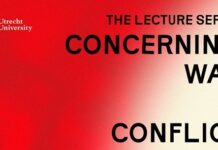James North
Mondoweiss / September 3, 2024
Unfortunately, The New York Times is easily the most important U.S. media outlet covering Palestine. So it’s time for another up-to-date dissection of ongoing Times bias.
Unfortunately, The New York Times is easily the most important U.S. media outlet covering Israel/Palestine, and its influence continues to grow. Regional American newspapers stagnate or shrink, and they have long since closed their reporting bureaus in the Mideast. U.S. cable news timidly continues to follow the Times’s lead, with the honorable exceptions of journalists like Ayman Mohyeldin and Ali Velshi at MSNBC.
So it’s time for another up-to-date dissection of ongoing Times bias. Let’s start with the outbreak of polio in Gaza, in this August 30 report. It begins: War and disease have been cruelly intertwined for as long as humans have confronted one another on the battlefield, and in the Gaza Strip, polio is now stalking a population that for nearly 11 months has been on the run from relentless bombardment.
Notice how “polio” — not Israel’s murderous military, is “stalking the population.” The beginning of that sentence is even worse: “War and disease have been cruelly intertwined as long as humans have confronted one another on the battlefield. . .” No mention of Israel’s deliberate destruction of Gaza’s healthcare system for nearly a year now, and no mention that its military is deliberately depriving civilians of food and water, which surely weakens their resistance to disease. The article later does include some oblique criticism of the Israeli response, although it nowhere explains why it took six weeks after the illness was detected to implement short cease-fires to re-start vaccinations.
The tone was set in the report’s first sentence: the polio outbreak in Gaza is more or less a natural disaster for which no one is to blame.
Let’s now turn to how the Times reported on Israel’s massive ongoing military attack in occupied West Bank Palestine, which started August 28. One of the paper’s first reports would have been ludicrous if it weren’t so tragic. Here’s the headline: ‘At least 10 are killed amid major Israeli military operation in West Bank’
Where to start? First: Who was killed? Israeli soldiers? Palestinian resistance fighters? Palestinian civilians? The Times headline writer cleverly hid who killed whom. Next: What does “Amid” mean here? Were these (unspecific) deaths some kind of accident? And finally: Why leave out “Occupied West Bank Palestine? Here’s an accurate headline, using the same number of words: Israel Invades Occupied Palestinian West Bank, Kills 10 Palestinians. Victims May Be Civilians.
Next, Patrick Kingsley, the paper’s Jerusalem bureau chief, used Israel’s attack in the West Bank as part of a long analysis that was either criminally incompetent or deliberate lying. Kingsley notes that Israel’s big offensive adds to its existing war in Gaza, and clashes on its northern border with Hezbollah. But here’s the amazing fact: the name “Benjamin Netanyahu” appears only once in his report, in passing.
Meanwhile, plenty of critics, in Israel and elsewhere, argue that Netanyahu is actually seeking to provoke a wider war to both draw in the U.S. and further distract from his own political failures. One view is that Netanyahu has tried to instigate an American attack on Iran for the past decade, to set back its allegedly rising nuclear threat. More recently, Israeli commentators aren’t too squeamish to note that he fears that an end to the conflicts will bring a political reckoning, in which he and his far-right coalition lose the next election and his trial(s) for corruption restart. (And Israel does put convicted prime ministers in prison.)
Kingsley’s failure in this article is only the latest example of how the paper has whitewashed or downplayed the harsh criticism of Netanyahu within Israel. Which explains why Times readers will be surprised, even stunned, by the reaction there to yesterday’s news that six hostages were found dead in Gaza. Several hundred thousand anti-Netanyahu demonstrators clogged the streets in Tel Aviv, and the country’s labor federation carried out a general strike yesterday.
In recent days, the Times has finally started to grudgingly recognize that it can no longer hide Netanyahu’s unpopularity. But for most of the conflict, now about to enter its 12th month, the paper has taken him seriously, at face value, and left unchallenged his dishonest assertions.
Here’s a final stunner. On August 20, the Times ran a long article by Linda Kinstler titled: “The Bitter Fight Over the Meaning of ‘Genocide.’” The article, which appeared in the Sunday Magazine, was mostly historical, citing past examples like Serbia/Bosnia, Rwanda and the Cambodian Khmer Rouge, but it could hardly entirely avoid Israel and Gaza.
But there was an astonishing omission. Omer Bartov is Israeli-born, a professor at Brown University, and unquestionably one of the world’s leading academic authorities on genocide. He has written 11 books on the subject, along with countless articles.
What’s more, Bartov is increasingly outspoken about what he’s witnessing in Israel. Here was the headline over his recent contribution to the British Guardian: “As a former IDF soldier and historian of genocide, I was deeply disturbed by my recent visit to Israel.”
Professor Omer Bartov is mentioned nowhere in the Times article. Not quoted. Not cited. This is the rough equivalent of writing about the theory of relativity and leaving out Albert Einstein. What possible excuse is there for this journalistic malpractice?
James North is a Mondoweiss Editor-at-Large











